L’Anse aux Meadows Buildings
Despite the fact that 1000 years have passed, we know quite a lot about this settlement. There were seven buildings arranged in a north-south line on a narrow terrace about 100 m in from the shore. The buildings are arranged into three complexes, each consisting of a large house, a ‘hall,’ and a small hut. The southernmost complex also contains a small house.
The buildings have been given letter designations from A to G. A, D, and F are large halls, C, E, and G are huts; B is a small house. An eighth building closer to the shore and on the other side of the brook, away from the three complexes, is another small hut, J. This hut was built over a small furnace or smelter in which iron was produced. The hut is usually referred to as the furnace hut or smelter hut. Nearby is a charcoal pit where charcoal was made to serve as fuel for the smelter.
All the buildings in the three complexes were intended for people to live in. The big halls each have several rooms. In hall A there are two large and one small room where people ate and slept, and one large room were some smithing was done, although it is likely that some people slept here, too. The iron-workers lived in house B. Hut C, which is a small irregular building, was the home of people lowest on the social scale at L’Anse aux Meadows, in all likelihood slaves.
Hall D has a large living-sleeping room, a large storage room, and a small workshop where wood-working took place. Hut E may have been for women.
Hall F is the biggest structure on the site, a big hall with six rooms and a lean-to shed.
The central row of rooms is all sitting/eating/living rooms. On the western side of this row is a small kitchen and two large storage rooms. On the eastern side is a shed where a boat was repaired.
On Norse settlement sites in Iceland and Greenland, and elsewhere, too, there are always barns and byres for livestock close to the dwellings and other enclosures for animals. In many cases, these occupy more space than the dwellings. At L’Anse aux Meadows there are no arrangements for animals.
The buildings sit on a terrace which encircles a bog on its western side. To the east is another bog, of a different type. The western bog is shaped like a shallow funnel [technically such bogs are called ‘fens’] and has a relatively hard surface. It is only when one removes the sod one realizes how wet it is. The eastern bog is a ‘raised’ bog, with an uneven surface containing fields of tussocks with deep wet holes between them. Black Duck Brook cuts through the terrace from the southeast.
We know the population of this settlement, by calculating the number of sleeping spaces since we can tell which rooms were used for sleeping and how they were furnished.
Most of the people at the L’Anse aux Meadows site were men, but there were also a few women. There was not much housekeeping. All spent the winter there, but in the summer many or most of the men went south. They returned to the site in early October bringing with them butternuts and presumably other goods as well.
At one point one of the smaller boats was damaged. It was repaired in the shed by hall F.
After just a few years the people at L’Anse aux Meadows packed up and left.
How do we know all this? The sources listed below will give you insight into how archaeological techniques help to unravel some of these mysteries.

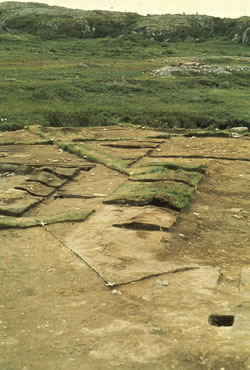
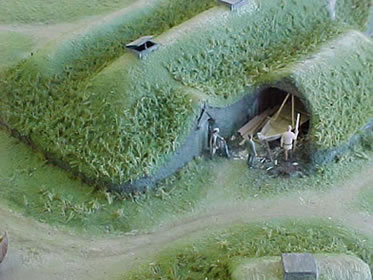
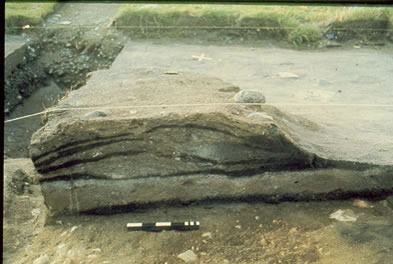
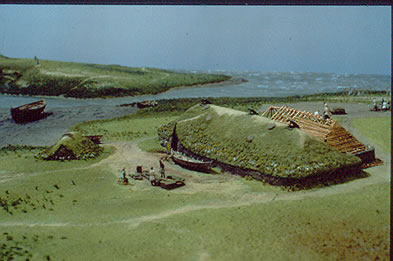

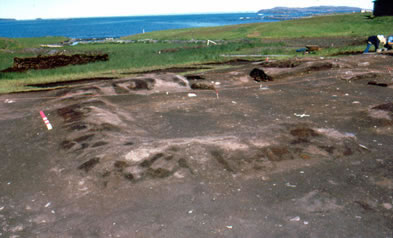
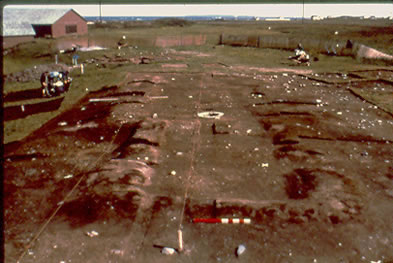
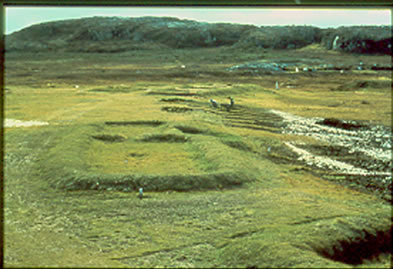
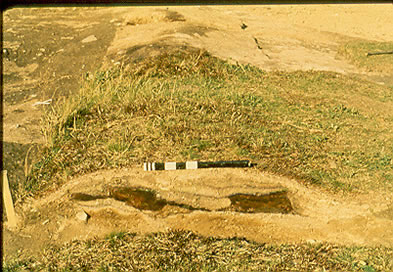

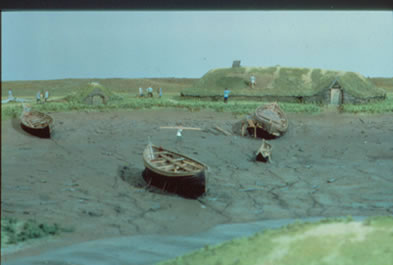
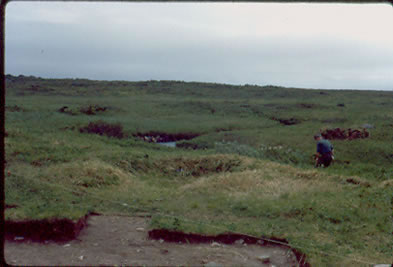
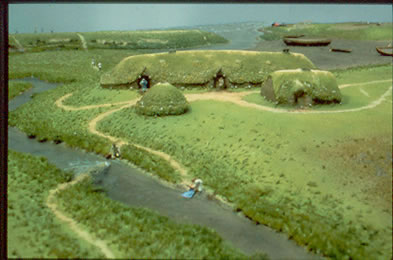
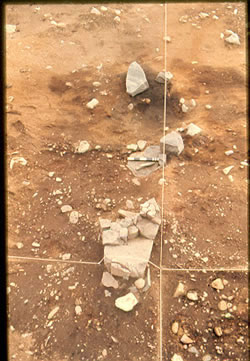
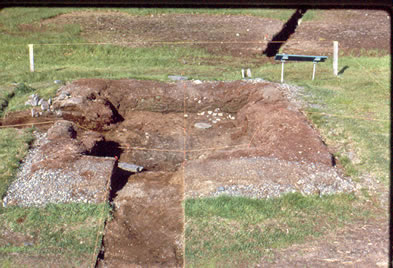
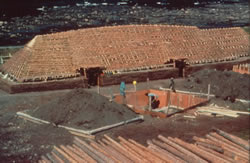
Chapters in Books
A-B-C Complex
Maps
D-E Complex
Maps
Buildings F-G Complex
Maps

